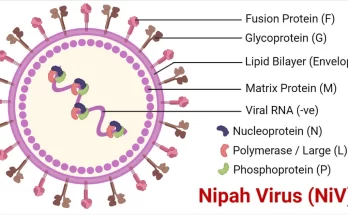This Article originally appeared on “Hanthana Vision” Magazine, which is the research magazine of University of Peradeniya. To read more about “Hanthana Vision Magazine” Click here
Toxocara canis is a round worm mainly found in dogs but can occur in other canids as well. Though, infection in adult dogs is generally asymptomatic however it may be fatal in puppies if untreated. Puppies acquire infection mainly through mother’s milk. Puppies pass a large number of eggs through faeces.

Toxocariasis is a zoonotic disease (transmitted from animal to human) caused by this parasite. Humans get this infection by ingestion of embryonated Toxocara canis eggs from contaminated food, water and soil. Eggs hatch in the small intestine and larvae penetrate through the intestinal mucosa and then migrate to different organs and encysted. However, larvae do not develop into adult forms in humans. Migrating larvae cause the damage in humans. Thus, there are several forms of the disease in humans depending upon the site of the infection.
1. Visceral larva migrans (VLM) – mainly affect visceral organs like liver and lungs
2. Ocular larva migrans (OL) — invade and damage the eye
3. Spinal form — neurologic
4. Covert toxocariasis — systemic and localized symptoms and signs (abdominal pain)
Dr. Susiji Wickramasinghe and colleagues have done extensive research on this veterinary and medically important parasite and have published several research papers in international peer reviewed journals. They have characterized the enzyme called arginine kinase from Toxocara canis for the first time. This enzyme plays an important role in intracellular energy metabolism of the parasite. Then, this research group has developed a highly sensitive IgG-ELISA test based on the recombinant Toxocara canis arginine kinase to diagnose VLM in the mouse model. Later, they have shown immunolocalization ot this enzyme in several nematodes (Toxocara vitulorum, Ascaris lumbricoides) including Toxocara canis. Their latest research paper published in 2016, investigated on Exon—intron organization, site-directed mutants and putative enzyme inhibitors on the recombinant arginine kinase of Toxocara canis. They have hypothesized that a frequent loss or gain of introns has happened during the process at
evolution of arginine kinase in nematodes.
Furthermore, some putative enzyme inhibitors have been tested against the activity of arginine kinase and they have shown that green (Japanese origin) and black tea (Sri Lankan origin) produced 15% and 25% inhibition of arginine kinase. The extract of Azadirachta indica (Neem/ kohomba) produced moderate inhibition (5%).
Moreover, the type of inhibition of green and black tea and Azadirachta indica has been determined. Green and black tea produced non-competitive type inhibition and Azadirachta indica produced mixed type inhibition during the reaction. Authors suggest that green tea and black tea may have antiparasitic properties and further hypothesize that a high rate of inhibition by black tea may be due to its high contents of poly phenols and other flavonoids.
References:
- Susiii Wickramasinghe et al., doi: 10.1007/s00436-008-1067-4.
- Kulathunga et al., doi: 10.1007/s00436—012—2884—z
- Susiii Wickramasinghe et al., doi: 10.1016/j.exppara.2007.03.015
- Susiii Wickramasinghe et al., doi: 10.1016/i.apjtm.2016.07.023.



